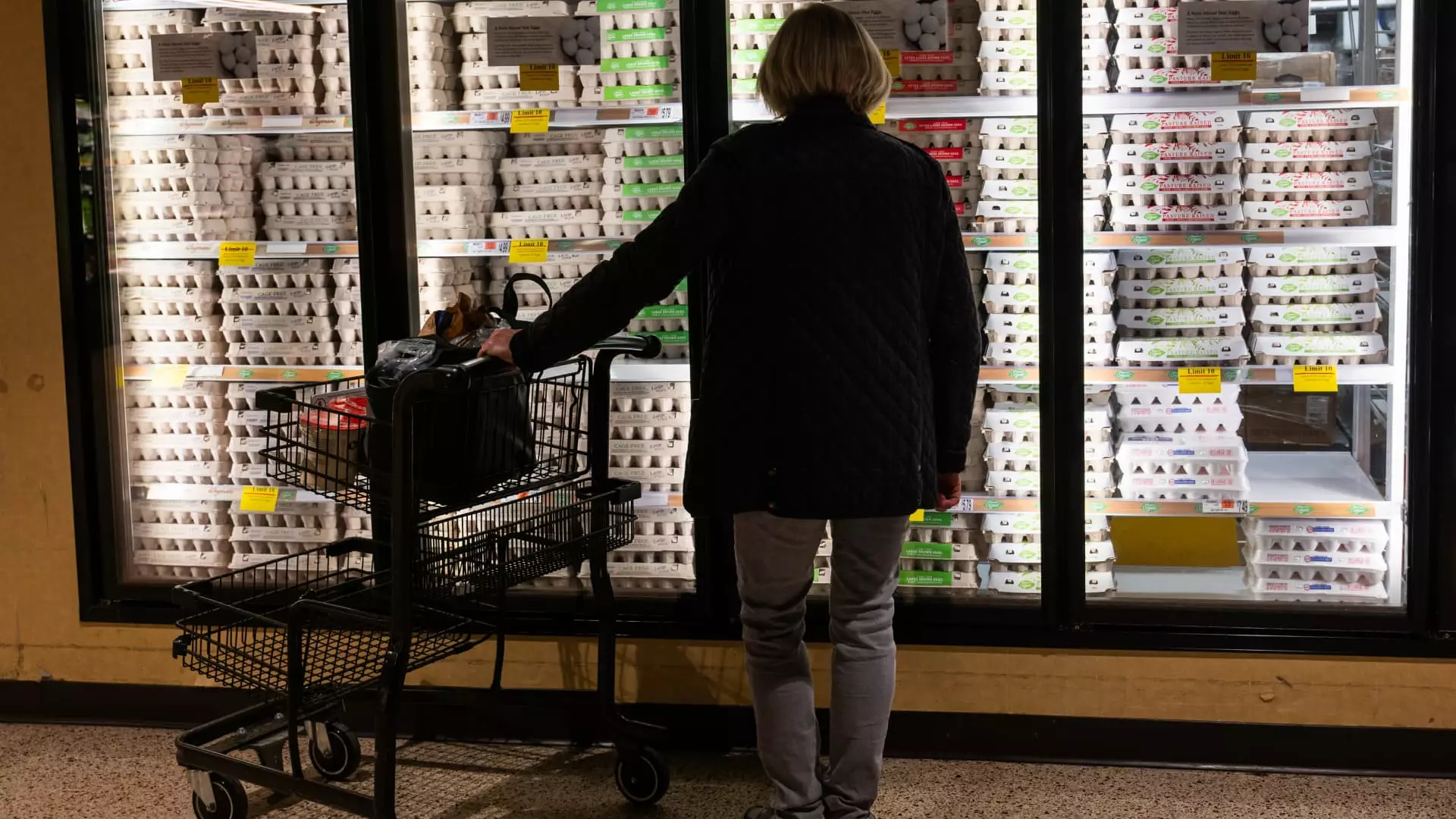In a dramatic turn of events, wholesale egg prices have plummeted by a staggering 44% over recent weeks, dropping to $4.83 per dozen from a shocking peak of $8.58 earlier this year. While the immediate reaction among consumers may be relief—particularly given the compounded strain of soaring grocery bills—it would be naive to assume that this reduction will directly translate to lower retail prices in the near future. Such certainty is further clouded by market dynamics and lingering demand uncertainties, raising critical questions about the supply infrastructure that has been challenged significantly over the past year.
A Temporary Respite or a Sustainable Trend?
It’s essential to interrogate these recent price drops with a discerning eye. Having experienced a relentless surge due to a severe bird flu epidemic that exterminated millions of egg-laying hens, the current reduction might offer a superficial solace. Yes, reports indicate that bird flu outbreaks have calmed, contributing to supply recovery, but it’s crucial to recognize that any progress can easily be undermined. After all, consumers are not just influenced by wholesale prices but by perceptions of stability in the food supply chain. History tells us that supply shocks can manifest suddenly and without warning, disrupting any semblance of price predictability.
Furthermore, while consumers are indeed paying less at wholesale levels, the question remains as to how quickly retailers will respond. Expecting prices to align seamlessly with wholesale trends is overly optimistic; stores often lag in reflecting price changes, amplifying consumer frustration and confusion at the cash register. With retail prices still hovering at an average of $5.90 per dozen even after the decline, the disconnect between wholesale movements and retail adjustments raises eyebrows and skepticism alike.
Consumer Behavior: Buying or Stockpiling?
Another layer to this situation lies in consumer psychology and behavior. After witnessing firsthand the chaos of inflated egg prices, many households rushed to stockpile, fearing further increases akin to those faced during the onset of the COVID-19 pandemic. Presently, this overstocking acts as a dampener on demand. It’s imperative to question how this behavior will evolve in light of the new price dynamics. Once panic buyers shift from stocking up to hesitating at the store, retailers may find their shelves burdened with excess inventory, further complicating price reductions.
Additionally, with the Easter holiday approaching—a peak time for egg consumption—demand may prove more elastic than anticipated. Analysts project that as families prepare for celebrations, we may see yet another spike in egg purchases, leading to potential price fluctuations that counteract the current downtrend. This cyclical nature of demand not only prolongs the uncertainty surrounding price stabilization but also reveals a critical gap in our food supply system.
The Role of Regulatory Oversight
It’s worth noting that amidst these fluctuations, the U.S. Department of Justice is reportedly investigating the pricing strategies and supply practices of major egg producers. This scrutiny could introduce changes that either constrain or compel producers to enhance transparency and fairness in their pricing. While calls for regulation and oversight should resonate with consumers concerned about monopolistic behaviors, active market dynamics signal that simply increasing regulatory measures may not yield immediate relief for households. The looming effect of monopolistic practices against the backdrop of sudden demand surges could lead to a rollercoaster of pricing rather than the balanced sustainability the market needs.
As we reflect on our relationship with basic commodities like eggs, it becomes evident that consumers must navigate a complex interplay of factors ranging from supply chain robustness to behavioral economics. As recent wholesale price drops bring a glimmer of hope, one must remain vigilant. Lower prices may boost our spirits, but without a commitment to sustainable supply practices and responsive retail strategies, the egg market could easily crack under pressure again. The landscape remains precarious, and consumers must brace themselves for continued fluctuations—because when it comes to eggs, the game is far from over.

